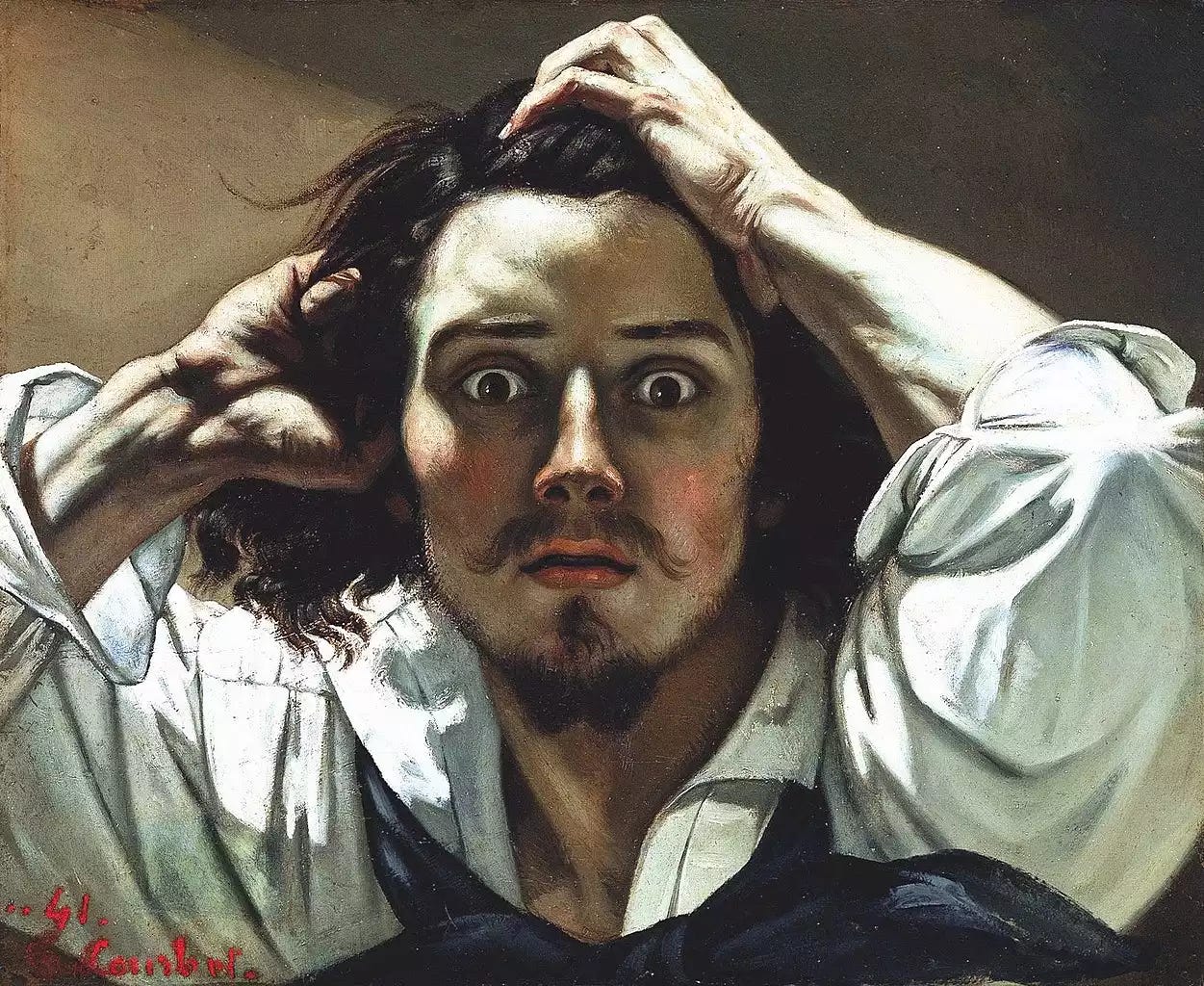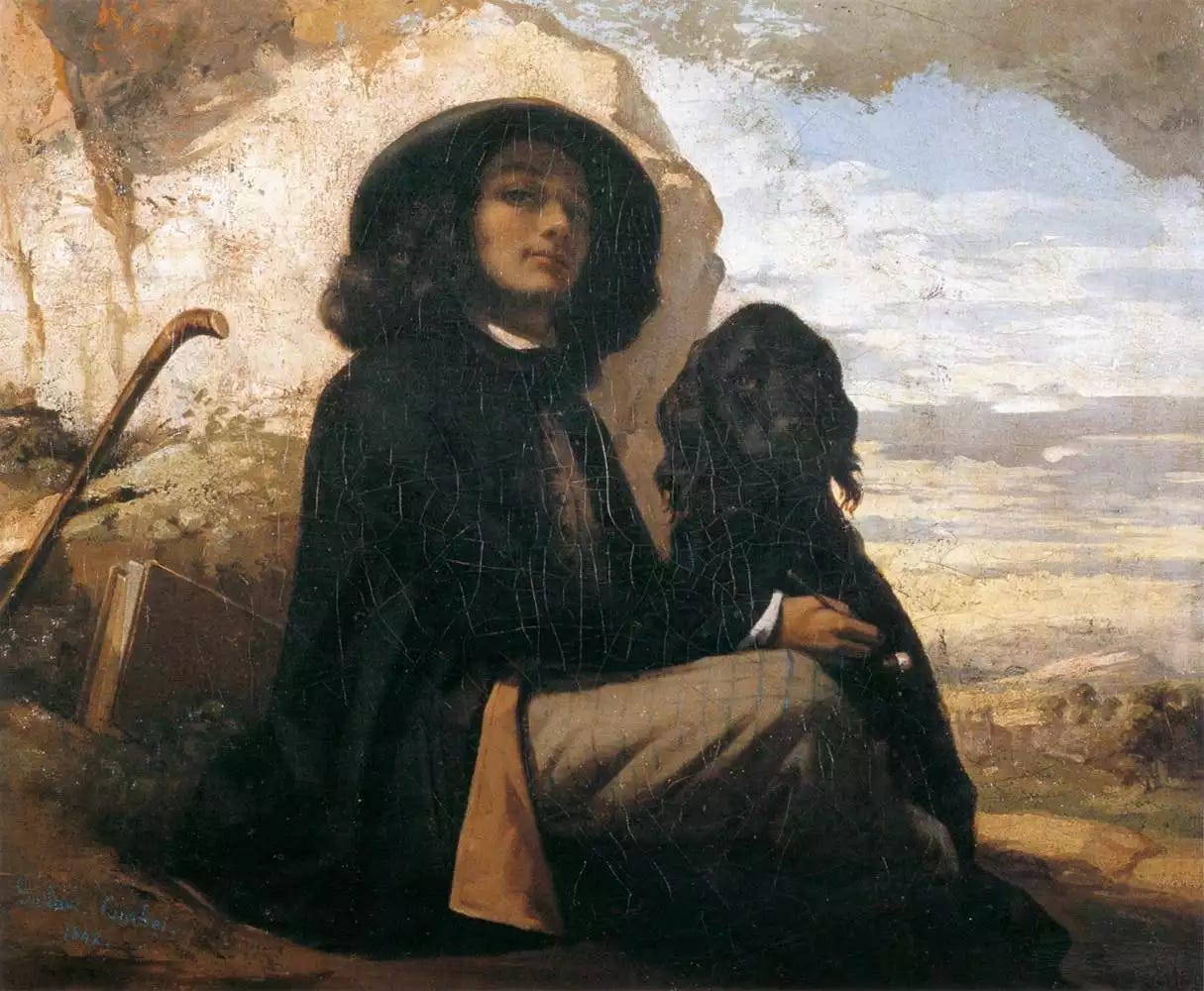Be weird, be different, be completely yourself.
“ridicule is the tribute paid to genius by the great average” -Oscar Wilde
Aristotle once observed that no great mind has ever existed without a touch of madness. In the nineteenth century many writers and artists picked up this idea to separate themselves from the crowd. As Oscar Wilde joked, “ridicule is the tribute paid to genius by the great average.”
Perhaps the most famous example of the romantic motive of the “genius madman” can be found in Courbet’s “The desperate man” (1843-45) a self-portrait of the artist aged 24. We see him staring directly at the canvas, pulling his hair, eyes wide, and with a touch of fever on his cheeks. As Courbet put it when he came to Paris, he wanted to”to live like a savage.”
And yet a less well-known self-portrait of Courbet shows the young man in a completely different light. We see him with a black dog looking down at the viewer, a bit aloof and certainly not mad (see below). The two paintings suggest the inner turmoil Courbet was in: on the one hand he wanted to be respected as a salon-artist, on the other hand he sought to revolutionize painting and be considered a genius.
The idea of the artist as a wounded soul, misunderstood and isolated was also taken up by philosophers such as Schopenhauer and Nietzsche. Schopenhauer memorably wrote the line that “talent hits a target no-one else can hit, genius hits a target no-one else can see.” Then again, Nietzsche offered a much-needed corrective by suggesting that “a genius is insufferable unless he possesses at least two other things: gratitude and cleanliness.”
The 19th century was a time of rapid historical change and the emergence of dramatic revolutions in both art and social life. So it makes sense that the idea of the “mad genius” became a symbol of personal freedom. As the saying goes, in a mad world, only the mad are sane.
Instead of stigmatizing the idea of being different, artists and writers embraced their position as self-imposed exiles from social mores and rules. By means of adopting the theme of “madness”, they were also able to suggest that the truly mad ones were those who considered themselves sane. As Goethe, the godfather of the romantic movement had already observed: “The world is so full of simpletons and madmen, that one need not seek them in a madhouse.”
In sum:
Be weird, be different, be completely yourself. Because we’re all a little mad, and you never know who will love the person you were trying to hide.
Julian
Thank you for reading my newsletter. To support my work, consider becoming a paying subscriber. Thank you!




"This tremendous world I have inside of me. How to free myself, and this world, without tearing myself to pieces. And rather tear myself to a thousand pieces than be buried with this world within me." - Kafka
The same call came to me the other day. Taking this to be a sign from Providence